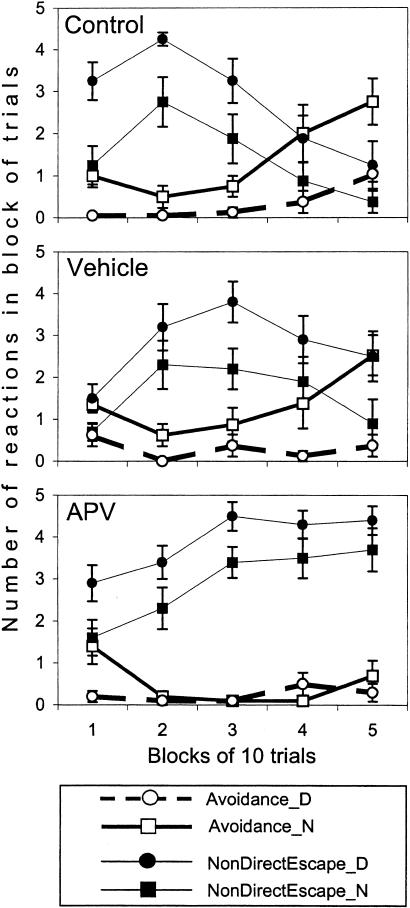Figure 2.
An acquisition of the two-way active avoidance reaction in control (top panel), vehicle (middle panel), and APV group (low panel). Thick lines represent the number of avoidance reactions to acoustic (Noise, N) or visual (Darkness, D) conditioned stimuli in consecutive blocks of trials. Thin lines represent the number of nondirectional responses that were observed as a chaotic jumping between the walls or to the ceiling of the shocked compartment before entering the opposite safe compartment. A decrease in the number of nondirectional responses to the end of the session (as it can be seen in controls but not in APV group) indicates an acquisition of escape reaction with an appropriate directionality and facilitates the learning of the avoidance reaction. Data are expressed as means and SEM.

